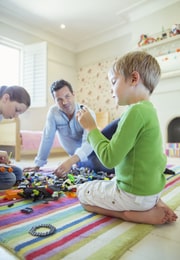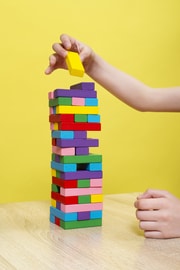24 days of Fun and Cheap Holiday Activities to Keep Kids Busy
Holidays bring a mix of feelings for almost everyone. Parents are forced to think of fun things to do at home during holidays to prevent kids from boredom. So, if you’ve been wondering, “What are some fun holiday activities, or how do I entertain my kids on a budget?” you’ll get all your answers right here.
To make the most out of off-days or keep your child busy, below are some holiday activities for kids that will not let you fret!
So scroll down and find new activities for each day.
Holiday activities for kids – First week
Go for Volunteering:
Holidays always give you enough time to indulge in extra yet soulful activities. Volunteering is also one of them. Check if any club or organization is looking for volunteers around you, and push your kids for this mindful activity.
Make Sock Toy:
If your kid’s stuffed toy is no longer as pretty as it should be, try making a new one using spare socks available in your home.
Practice Setting Goals and Completing Them:
This is the healthiest activity. By setting goals and practicing their fulfillment can help kids with their mental strength building.
Invent New Games:
Do you want your kids to practice brainstorming more often? That shouldn’t always have to be academic, right? So try making new games of your own as holiday activities.
Charitable Giving
Have a discussion with your kids about giving. Decide what you can do as a family to help someone in need or an organization. Everyone can contribute, even very small amounts from young children. It’s an excellent way to ignite compassion for giving in share in the joy together.
Start Journaling:
Journaling can help your kid in many ways too. For example, being aware of their good and bad deeds or how much fun they had in a particular, all this when written can turn out good. Also, journaling helps in improving writing skills a lot.
Try to be Close to Nature:
You can utilize holidays in a way that makes your kid closer to nature. For example, going for nature walks.
Host Play Date Outside:
Put your backyard to use by hosting a play date. This is another one of the healthy holiday activities that can help your kids maintain a bond with their buddies.
Plan 2nd week of entertainment for your kids
Attend a Holiday Lightshow:
Christmas might be just around the corner and if you’re not sure what to do exactly, then try exciting and fun-filled Christmas ideas for kids. Attending a holiday light show can be one of them too.
Read Books:
Reading books doesn’t always have to be as boring as it sounds usually. You can use audiobooks, books for kids that come in an interactive form or accompany your kid’s reading session, so he doesn’t feel alone.
Try Verbal Games:
Verbal games come in handy when you’re really busy with important work of your own. With such games, your kid will stay active and practice his vocabulary words while you do your own work.
Bedroom Makeover:
Making changes to your surroundings can be one of the holiday activities too. This will let your kids make changes as they wish as well as stay active.
Visit the Library:
Nothing beats a healthy visit to the library. Push your kids to join book clubs and discuss books after reading them.
Suggest a Science Experiment:
You can discuss with your kid and see what interests him the most in his science subject. Then, you can select an experiment related to it as a holiday activity.
Learn About The World:
Utilize these holidays to increase your kids’ knowledge about the world he lives in. This can also help him develop a positive attitude after knowing the good he has been blessed with.
Keep your child busy in 3rd week also
Create An Idea Box:
It is perfectly normal to run out of creative ideas sometimes. So to deal with this, you can create an idea box and expand the holiday activities you want to do with your kid.
Write Holiday Stories:
Writing holiday stories can help collect memories in a way that your kid can go through again.
Family Photo Shoot
It is often difficult to get everyone together for a Christmas photo. A child’s first impression of it may be that it’s boring. So, why not make the family photo shoot a fun activity. Create a theme and dress up accordingly.
Arrange Slumber Party:
Spend a night with the kids at a slumber party arranged at your own place. Kids always love to try fun ways to spend their nights.
Teach them Baking:
Is your kid a sweet tooth? Then try teaching him baking because he’d definitely love trying and tasting baked items.
Play Board Games:
Playing board games can be a perfect option as one of the holiday activities.
Sketching:
You can also encourage your kid to improve his sketching skills during the holiday break.
Try Music Classes:
Based on the interests of your kids, you can sign up for music classes too. Creativity comes in different shapes, and being good at music is one of them.
Conclusion:
Being mindful of your kid’s positive learning can sometimes feel trickier. But not to worry, because we are constantly surrounded by opportunities waiting for us to explore.
So, hopefully, these holiday activities will keep your kids active, busy, and happy throughout the holiday season.







